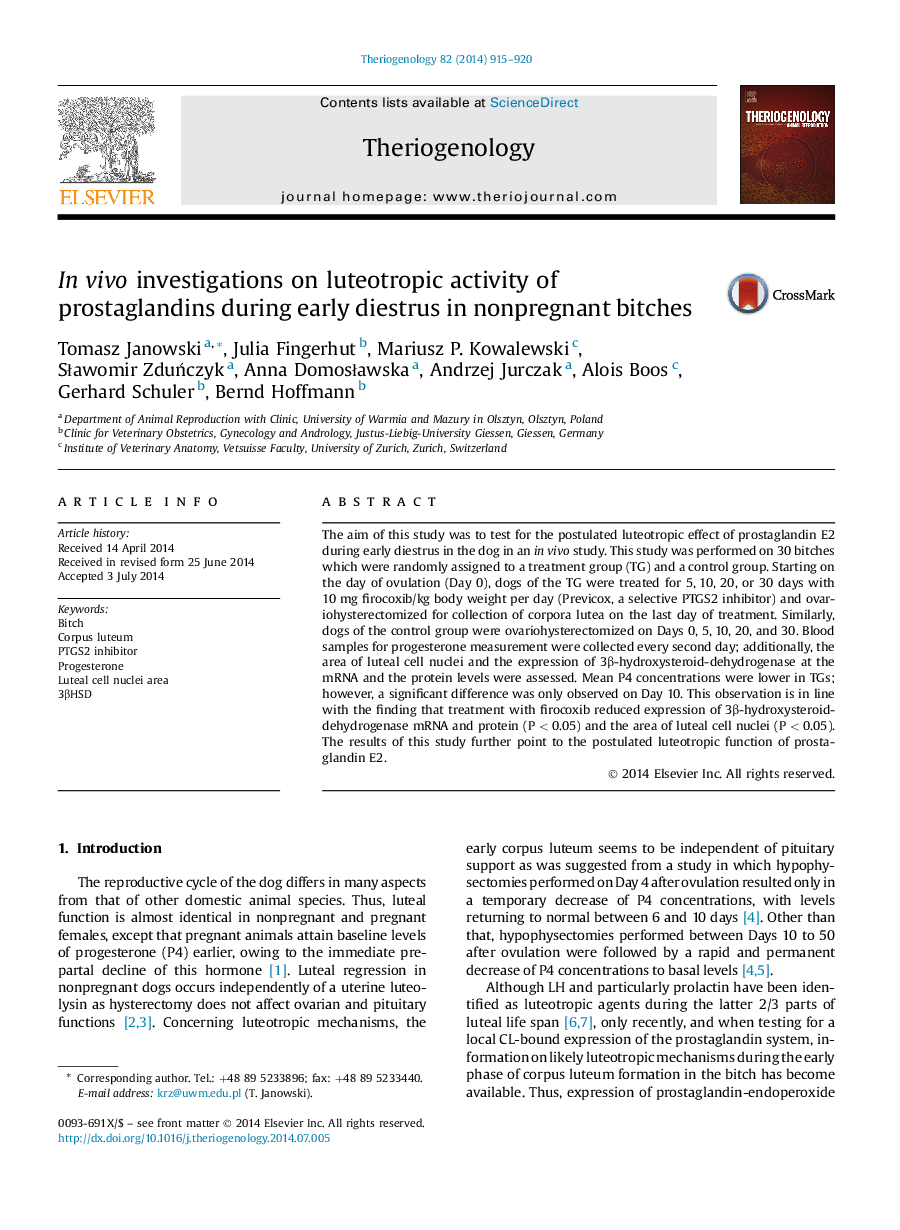| Article ID | Journal | Published Year | Pages | File Type |
|---|---|---|---|---|
| 2095070 | Theriogenology | 2014 | 6 Pages |
The aim of this study was to test for the postulated luteotropic effect of prostaglandin E2 during early diestrus in the dog in an in vivo study. This study was performed on 30 bitches which were randomly assigned to a treatment group (TG) and a control group. Starting on the day of ovulation (Day 0), dogs of the TG were treated for 5, 10, 20, or 30 days with 10 mg firocoxib/kg body weight per day (Previcox, a selective PTGS2 inhibitor) and ovariohysterectomized for collection of corpora lutea on the last day of treatment. Similarly, dogs of the control group were ovariohysterectomized on Days 0, 5, 10, 20, and 30. Blood samples for progesterone measurement were collected every second day; additionally, the area of luteal cell nuclei and the expression of 3β-hydroxysteroid-dehydrogenase at the mRNA and the protein levels were assessed. Mean P4 concentrations were lower in TGs; however, a significant difference was only observed on Day 10. This observation is in line with the finding that treatment with firocoxib reduced expression of 3β-hydroxysteroid-dehydrogenase mRNA and protein (P < 0.05) and the area of luteal cell nuclei (P < 0.05). The results of this study further point to the postulated luteotropic function of prostaglandin E2.
